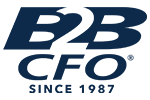
What’s Right for Your Business: 5 Strategies To Boost It
Posted on September 10, 2020 by B2B CFO
In these unprecedented times, all businesses will be facing issues they have never encountered before. Companies find themselves operating in the shadow of potential bankruptcies and significant loss of customers and employees. However, even before the pandemic disrupted the business world, many companies have considered as they evolve, what is the right structure for their business? How can they maximize tax breaks, create new revenue streams, and mitigate risk?
In an effort to address these issues, you may need to add or remove owners, modify ownership interests, change your legal structure, relocate into different geographies, sell assets, refinance loans, change operations, remove unprofitable lines of business, renegotiate contracts or some combination of all of these actions.
Here are 5 ways to help your business– and perhaps capitalize on this crisis.
1. Changing the business’s entity structure
It may be necessary to restructure your business to make it more profitable. When you began your business, the legal entity structure may have been appropriate then, but could have evolved over time and especially today in our current season of uncertainty.
- An LLC may switch to a C corporation. Thinking of raising capital? Hoping to go public? Expect a lot of shareholders? Then this could be a viable option to explore.
- A sole proprietorship may choose to become a limited liability company in order to minimize the owner’s personal risk in the event a client sues the business.
- An LLC or corporation may make an election for tax purposes to be treated as an S corporation to minimize taxes.
- If your business is operating in another state, you may need to register as a foreign entity in that state.
You will need to comply with the applicable legal requirements and your entity documents when you implement these types of changes.
2. Growth through Mergers and Acquisitions
In an effort to expand its market share, consolidating companies or assets, with an eye toward stimulating growth, gaining competitive advantages, increasing market share, or influencing supply chains, your company may decide to acquire an existing business or combine forces with another company to create a new, joint organization. These transactions can be complex and may require careful structuring in order to minimize tax consequences.
3. Update Billing and Collections Policies
Getting paid as quickly as possible can improve your cash flow. Instead of invoicing for your goods and services, find ways to get paid immediately. Offer your customers and clients remote payment options, such as credit/debit card and PayPal. If you do need to invoice, send it by email (not snail mail) and provide a quick and easy payment option (e.g., enabling customers to use their bank account or credit card). When you must send invoices, be sure your collection policies are set to ensure you collect as soon as possible. For example, instead of offering a 30-day payment period, require payment upon receipt of the invoice.
4. Renegotiate Contracts
Today’s economic downturn has underscored the difficulties involved in the area of managing third-party spending and contracts, making contract renegotiations even more critical as business look for ways to improve cash flow and reduce expenses. Make sure you have market data on hand and do your homework before you attempt to renegotiate a vendor/supplier contract. Reinforce that you’re trying to build upon your long-term relationship and viability- not just cost-cutting. Explain that your better financial health will likely translate into larger future orders. Point out the difference between current prices (which have been gradually rising) and true market value (which has seen a quick decline). Find out where you can save your supplier money. Whenever you make changes to an existing contract, be sure to document the new agreement in writing and have it signed by the parties.
5. Launch a Virtual Business Unit
The coronavirus outbreaks have now forced many companies to stress-test working from home at its most extreme. As the lock down starts to ease, so will remote working situations. Remote working arrangements have forced many companies to evaluate if it is time to launch a virtual unit within your business. Though this may challenge an existing traditional organizational design, it may afford efficiencies in terms of cost cutting office space and overhead labor costs. Could you outsource a business function or set up a temporary business unit to achieve an organizational goal? This transition will require a new management framework more centered around high-tech and telecommuting resources.
We’re another day closer to America getting back to business. How will you pivot your business during these challenging times? What hidden opportunities can you and your customers seize?
If you should need guidance on reducing expenses or improving cash flow, B2B CFO® Partners have deep experience in all areas of business advisory services to get your business back to business! Contact me today for a strategy session: ArtBottoms@B2BCFO.com


